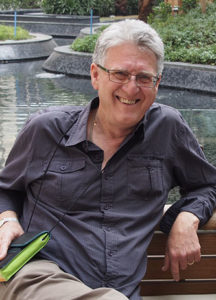
David Bennett, IAAH President 1989-1994
“A Charter for an International Association was signed by sixteen delegates from thirteen countries as members of an Interim Committee. A further 132 individuals also signed the Charter to record their agreement. Dr Murray Williams (Australia) was the inaugural Chairman.”
* In this brief account of the ratification of IAAH’s elegantly worded Charter, the signatories who ratified the Charter were among attendees at the 4th International Symposium on Adolescent Health, held in Sydney in March 1987.
Thirty-three years later, in November 2020, the 12th World Congress for Adolescent Health will be held in Lima, Peru, providing an opportunity to appreciate the many years of vibrant professional activity in Central and Latin America. Indeed, the 16 original signatories of the IAAH charter included delegates from Mexico, Argentina, and Puerto Rico, reflecting the fact that, in parallel with the emergence of interest around providing quality clinical care for adolescents in the United States, similar independent developments were occurring in Central and Latin America.
Shortly before the opening of the first adolescent medicine clinic in Boston in 1951 by J Roswell Gallagher, the physician Nadia Gomes Ferrarotti established the multidisciplinary Municipal Adolescent Centre in Buenos Aires. Around the same time, other adolescent centres were started in Santiago, Chile by Paula Palaez, and in Mexico City by Dulanto Gutierrez. The first textbook on adolescence in Spanish was published in 1971, authored by Argentinian psychiatrists Arminda Aberastury and Mauricio Knovel.
In the mid-seventies, pioneering adolescent physicians including Veronica Coates, Anita Colli, and colleagues in Sao Paulo, and Evelyn Eisenstein and Maria Helena Ruzany in Rio de Janiero, Brazil were setting up hospital-based clinics for adolescents. Other adolescent health services appeared soon afterwards in Uraguay, Venezuela, Cuba and Costa Rica and, in 1981, Eleodoro Freyre established the first adolescent clinic in Peru.
In the Caribbean, champions of adolescent health in different islands worked quietly but steadfastly to establish the field. One of the first innovations in Jamaica, in the 1960’s, was a comprehensive school clinic for children and adolescents in Kingston. Later projects in the 1970’s were directed at addressing adolescent reproductive and sexual health issues with a focus on reducing teenage pregnancies. The region has been actively involved with IAAH since its establishment, with pioneering icon Sheila Campbell-Forrester serving as the first Caribbean Vice-President from 1988 to 2005, followed by Kim Scott-Fisher, Abigail Harrison Kong and Asha Pemberton (present VP).
Over recent decades, Latin American developments in adolescent health care, and increasingly in public health, have continued to flourish, with the formation of various national and regional associations have been formed. A national example is SPAJ (Sociedad Peruana de Adolescencia y Juventud) that was founded in 1997, and the regional grouping known as CODAJIC (Confederación de Adolescencia y Juventud de Iberoamerica Italia y el Caribe) was formed in 2002. In 2001, the 7th IAAH World Congress on Adolescent Health, held in Salvador, Bahia, Brazil, was a resounding success.
More recently, through the support of the Pan American Health Association and a consortium of partners, the first Caribbean Congress on Adolescent and Youth Health was held on October 14 – 17, 2019 in Port-of-Spain Trinidad with the theme “Championing our Wealth: Promoting Health & Wellbeing of Adolescents and Youth in the Caribbean”. With much excitement, I now await the 12th World Congress in Lima Peru in November 2020.

